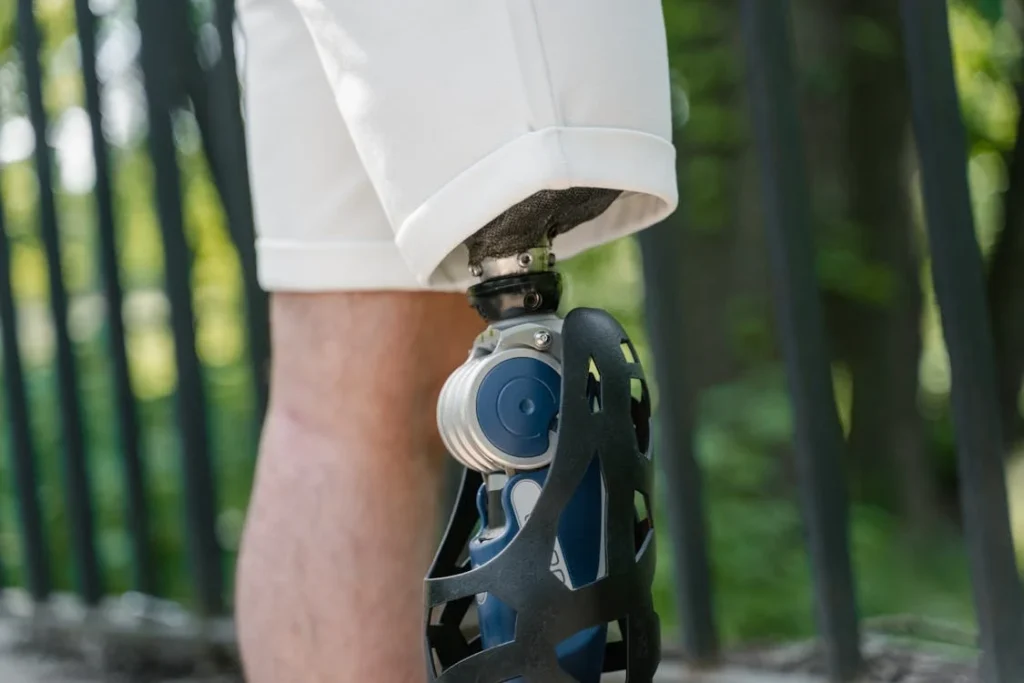Bionic prosthetic limbs have changed the way people with limb loss experience life. These advanced devices help users regain independence, perform daily tasks, and even enjoy hobbies they once thought were impossible. But if you’re considering getting one, or you already have one, you might be wondering—how long do they last?
The answer depends on many factors, like how often they are used, how well they are maintained, and the quality of the materials used in their construction. Like any other device, bionic limbs need care and occasional repairs to ensure they function properly.

Understanding the Lifespan of Bionic Prosthetic Limbs
Bionic prosthetic limbs are built to be strong, reliable, and long-lasting. However, their lifespan varies depending on several factors, including the materials used, the level of daily wear and tear, and how well they are maintained.
On average, a high-quality bionic limb can last anywhere between three to five years before needing a replacement or major repairs. Some components, like the outer shell or cosmetic coverings, may wear out faster, while internal electronic parts can last longer with proper care.
Materials and Construction Matter
The durability of a bionic prosthetic limb largely depends on the materials used to build it. Most modern bionic hands, arms, and legs use lightweight but sturdy materials like carbon fiber, aluminum, and high-grade plastics.
These materials provide strength without adding unnecessary weight, making the prosthetic easier to use while ensuring it remains resilient under daily use.
The electronic components inside a bionic limb, such as sensors, batteries, and microprocessors, also play a crucial role in determining longevity. These parts are designed to last, but like any electronic device, they may degrade over time.
Repeated charging, exposure to heat or moisture, and excessive strain can cause these components to weaken, leading to the need for servicing or replacement.
Frequency of Use and Everyday Wear
The more frequently a bionic limb is used, the more strain it experiences. A person who uses their prosthetic daily for work, exercise, and household chores will put more stress on it compared to someone who wears it occasionally.
High-impact activities like running, weightlifting, or manual labor can speed up the wear and tear process, leading to a shorter lifespan.
Even simple daily movements contribute to natural wear. Over time, joints, hinges, and moving parts may loosen or experience minor damage.
While high-quality prosthetics are designed to withstand years of use, excessive force or strain can cause mechanical parts to degrade faster. Regular check-ups and timely repairs can help keep the limb functioning optimally for longer.
Environmental Factors and Their Impact
External conditions play a major role in determining how long a bionic prosthetic limb lasts. Humidity, dust, and extreme temperatures can all impact the materials and electronic components.
Moisture is particularly damaging, as it can lead to rusting in metallic parts and electrical malfunctions in the microprocessors.
For people living in hot and humid regions, extra care is needed to keep the prosthetic dry and free from excessive sweat buildup. Waterproof models are available, but not all prosthetic limbs are resistant to water.
If a bionic limb is exposed to rain, accidental spills, or excessive perspiration, it is important to dry it thoroughly and check for any potential damage.
Temperature changes can also affect performance. Extreme heat may weaken certain plastics, while very cold temperatures can make some materials brittle.
Those who live in regions with harsh winters or high heat need to be mindful of how these conditions affect their prosthetic and take extra steps to protect it.
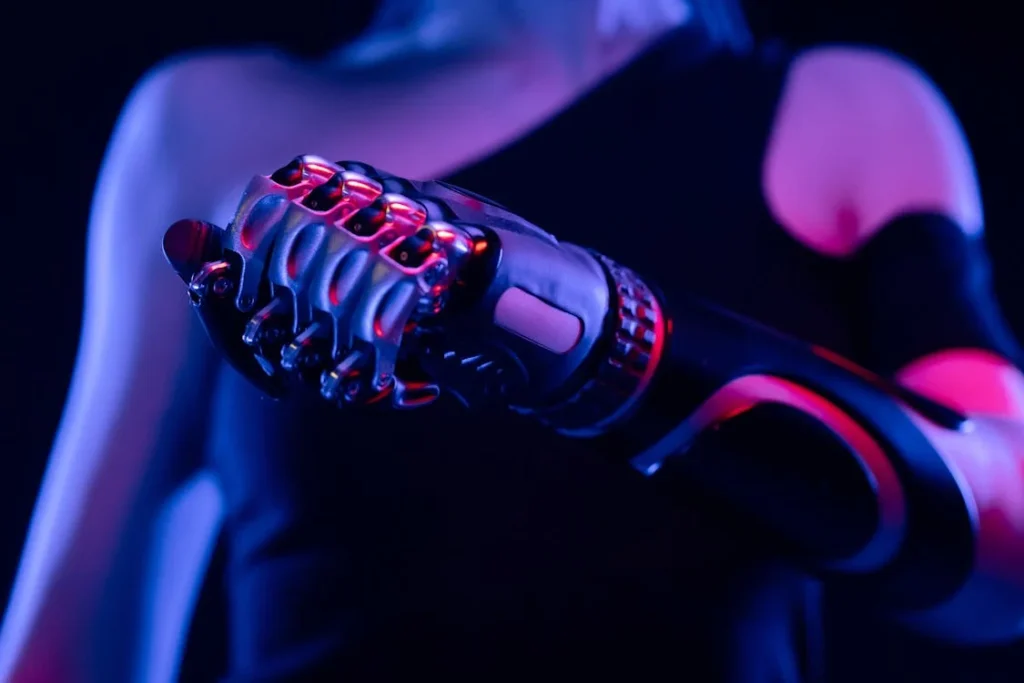
How to Extend the Lifespan of a Bionic Prosthetic Limb
Bionic prosthetic limbs are valuable investments that restore independence and improve the quality of life. While they are built to be durable, taking proper care of them can significantly extend their lifespan.
Regular maintenance, proper handling, and timely servicing are key to ensuring they function optimally for years.
The Importance of Regular Cleaning
Keeping a prosthetic limb clean is one of the simplest yet most effective ways to extend its lifespan. Dust, sweat, and dirt can build up over time, affecting both the appearance and functionality of the limb.
Regularly wiping it down with a soft, damp cloth can prevent dirt from accumulating in joints and crevices. For prosthetics with electronic components, it’s important to avoid excess moisture, as water can damage internal circuits.
Sweat is another factor to consider, especially for people who wear their prosthetics for long hours. The socket, which connects the prosthetic to the residual limb, is in direct contact with the skin and can trap sweat and bacteria.
Cleaning the socket regularly helps prevent skin irritation and also protects the inner lining of the prosthetic. Some users prefer to wear a prosthetic sock or liner to absorb sweat and keep the socket dry, which can further prolong the life of the limb.
Handling with Care to Avoid Damage
While bionic limbs are designed to be tough, they still require careful handling. Dropping the limb, applying excessive force, or using it in ways it wasn’t designed for can cause unnecessary strain on the mechanical and electronic components.
It’s important to follow the manufacturer’s guidelines on what activities are safe for the specific model.
Some prosthetic limbs are built for high-impact activities like running or sports, while others are meant for everyday use. Using a standard prosthetic hand for weightlifting, for example, may cause damage over time.
If an individual has an active lifestyle, choosing a prosthetic designed for sports or heavy-duty use can prevent premature wear and tear.
Battery Care for Bionic Limbs
For battery-powered prosthetic limbs, proper battery care is crucial. Most modern bionic hands and arms use rechargeable lithium-ion batteries. Like any rechargeable battery, these will degrade over time, but taking a few precautions can help slow this process.
It’s best to charge the battery before it runs out completely. Letting it drain to zero frequently can shorten its lifespan. At the same time, overcharging can also cause damage, so it’s best to unplug the charger once the battery is full.
Storing the prosthetic with a fully charged battery, rather than an empty one, helps maintain battery health in the long run.
Extreme temperatures can also affect battery life. Leaving the prosthetic in direct sunlight or exposing it to freezing temperatures can impact battery performance.
If the device is not going to be used for an extended period, storing it in a cool, dry place with a moderate charge level is recommended.
When to Seek Professional Servicing
No matter how well a prosthetic limb is maintained, it will eventually require servicing. Small issues, like a loose joint or reduced grip strength, can indicate that adjustments are needed. Addressing minor problems early can prevent more significant issues down the line.
Most prosthetic manufacturers recommend routine check-ups every six to twelve months. During these visits, technicians can inspect the limb for signs of wear, update software if needed, and make necessary adjustments.
If a user experiences discomfort, unusual noises, or decreased functionality, it’s best to get the prosthetic checked as soon as possible rather than waiting for it to worsen.
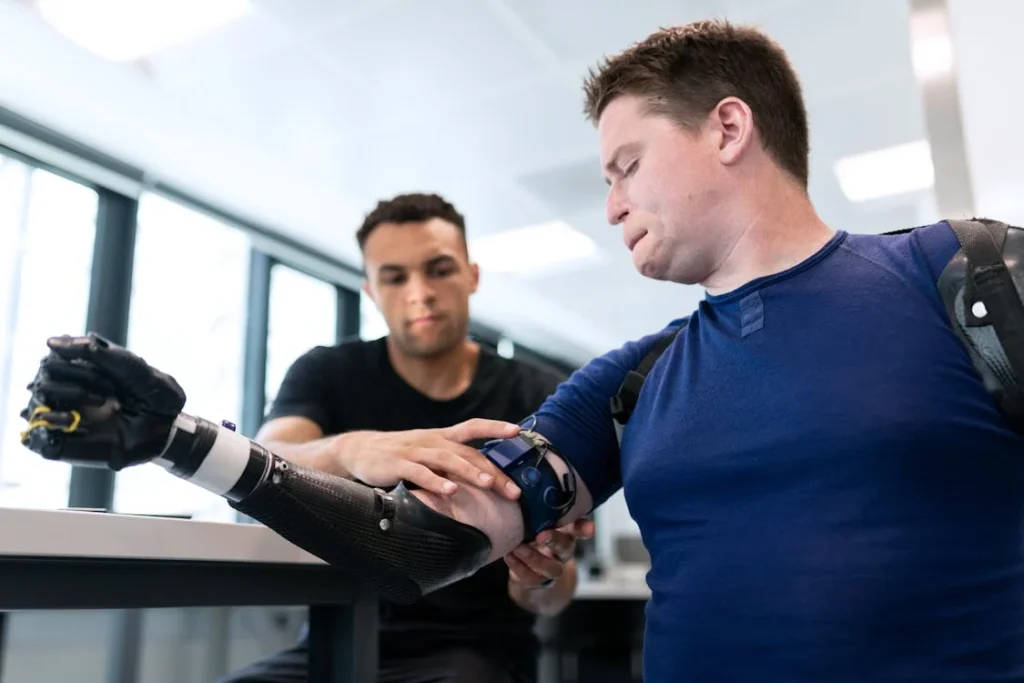
Signs That Your Bionic Prosthetic Limb Needs Repair or Replacement
Even with proper care, all bionic prosthetic limbs will eventually need repairs or, in some cases, a full replacement. Knowing when to seek professional help can prevent sudden failures and ensure continued functionality.
Many issues start as minor inconveniences but can develop into major problems if ignored. Recognizing these early signs can help users address concerns before they impact daily activities.
Reduced Performance and Functionality
One of the first signs that a prosthetic limb may need servicing is a decline in performance. If a bionic hand struggles to grip objects securely or a prosthetic leg feels unstable, it could be due to worn-out mechanical components.
Over time, hinges, motors, and sensors may lose their precision, causing movements to become less fluid. In many cases, a technician can make small adjustments or replace specific parts to restore proper function.
Some users may notice delayed responses in their bionic limbs. For example, if a prosthetic hand takes longer to react to muscle signals, it could indicate sensor degradation or battery issues.
If recalibrating the device doesn’t resolve the problem, professional servicing is necessary to check for underlying electronic faults.
Physical Wear and Tear
Visible damage is another clear sign that a prosthetic limb needs attention. Cracks in the outer shell, loose screws, or exposed wiring should never be ignored.
While minor cosmetic damage might not affect function, deeper cracks or fractures can compromise the prosthetic’s structural integrity.
For prosthetic legs, worn-out foot soles or excessive friction in the knee joint can lead to discomfort and difficulty walking.
If a user experiences increased pressure or pain while wearing their prosthetic, it could indicate that the socket or suspension system has loosened over time. A proper refitting or realignment can restore comfort and stability.
Battery and Electrical Issues
Since most bionic limbs rely on battery power, electrical issues can signal the need for servicing. If the device suddenly stops holding a charge or takes significantly longer to power on, it may be time for a battery replacement.
In some cases, power fluctuations or unresponsive controls could indicate wiring issues or software malfunctions.
Users should also pay attention to unusual heat generation from the prosthetic. If the device becomes noticeably warm during regular use, it could mean the battery or internal circuits are struggling to function properly.
Excess heat can lead to long-term damage, so it’s best to stop using the prosthetic and consult a professional.
Unusual Noises or Loose Components
Clicking, grinding, or rattling sounds from a prosthetic limb are never a good sign. These noises often indicate that internal components are loose or misaligned.
Ignoring them can lead to further damage and more costly repairs later on. Regular check-ups can help catch these issues early and ensure that all moving parts remain properly aligned.
Loose components can also affect stability. If a prosthetic arm or leg feels wobbly or shifts unexpectedly, it may need realignment.
Any change in how the prosthetic fits or feels should be addressed promptly, as poor alignment can lead to discomfort or strain on the residual limb.
Deciding Between Repair and Replacement
When a prosthetic limb starts showing signs of wear, the next question is whether it should be repaired or replaced. In most cases, minor issues like worn-out grips, loose parts, or minor sensor malfunctions can be fixed with simple repairs.
However, if multiple components are failing or if the device no longer meets the user’s needs, replacement might be the better option.
Technological advancements also play a role in this decision. Bionic prosthetics continue to evolve, with newer models offering better functionality, improved battery life, and more advanced sensory feedback.
If a prosthetic is more than five years old, upgrading to a newer model may provide significant benefits. Many users find that switching to a modern prosthetic with enhanced features improves their quality of life.
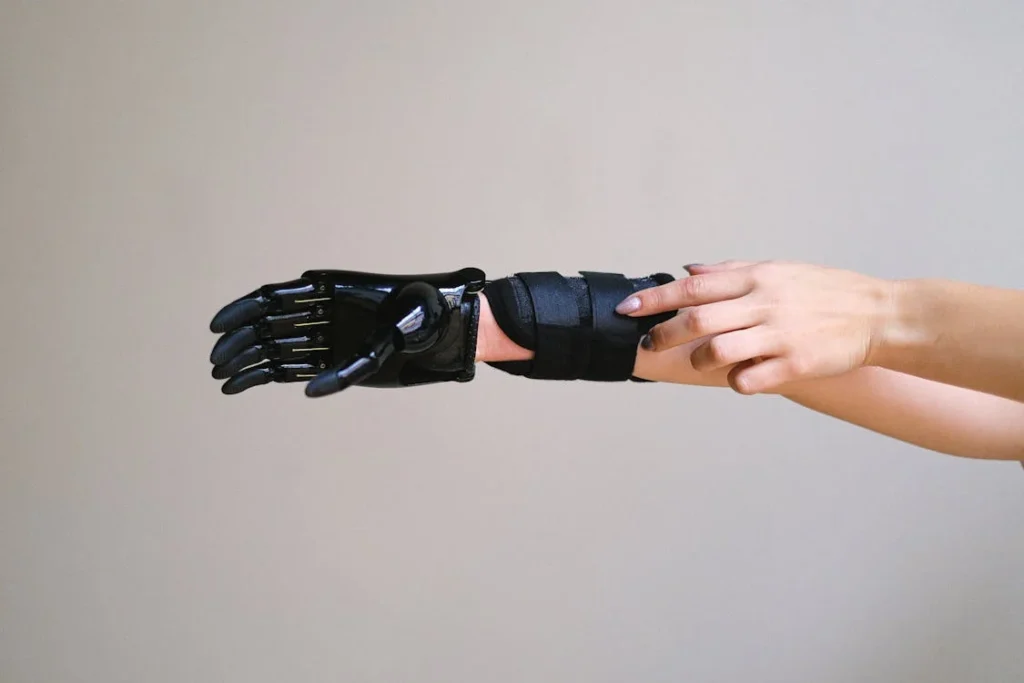
The Role of Regular Maintenance in Extending the Life of a Bionic Prosthetic Limb
Regular maintenance is the key to keeping a bionic prosthetic limb in top condition for as long as possible. Just like a car or any other advanced device, a prosthetic limb requires routine care to function properly.
Users who take the time to follow a maintenance routine often find that their prosthetics last longer, perform better, and feel more comfortable over the years.
Daily and Weekly Care Routine
Simple daily habits can make a big difference in prolonging the life of a bionic limb. Cleaning the prosthetic at the end of each day prevents dirt, sweat, and bacteria from accumulating.
Wiping down the exterior with a soft, slightly damp cloth helps remove dust and surface debris. For prosthetic hands or arms with moving joints, ensuring there is no buildup in crevices helps maintain smooth movement.
For users with prosthetic legs, checking the socket and suspension system is important to ensure a secure and comfortable fit. If the prosthetic starts to feel loose or uncomfortable, it could mean that the suspension system needs adjustment.
Keeping the limb dry is also essential, as excess moisture can damage both the prosthetic and the skin it comes in contact with.
At least once a week, users should inspect their prosthetic for any signs of wear, such as small cracks, loose parts, or unusual sounds.
Catching minor issues early prevents them from turning into bigger problems. Those who use their prosthetic frequently for physical activities should be especially mindful of any changes in performance or fit.
Professional Servicing and Tune-Ups
Even with regular self-maintenance, professional check-ups are necessary to ensure that all components are functioning as they should.
Prosthetic specialists recommend getting the device professionally inspected every six months to a year. During these visits, technicians can test the sensors, adjust the alignment, and replace any worn-out parts.
Some prosthetic limbs also require software updates to improve functionality. These updates may enhance response times, improve grip strength, or introduce new features.
Regular servicing ensures that the prosthetic continues to operate at its best and takes advantage of the latest improvements.
If a user notices any decline in performance, such as delayed response times, weaker grip, or reduced battery life, it is best to seek servicing immediately.
Ignoring small issues can lead to more serious malfunctions, which may result in higher repair costs or even the need for a full replacement.
Storing a Prosthetic Limb Properly
Proper storage is another important aspect of maintenance, especially for users who do not wear their prosthetic limb at all times. When not in use, the prosthetic should be stored in a clean, dry place away from direct sunlight or extreme temperatures.
Keeping it in a protective case or a dedicated space helps prevent accidental damage.
For battery-powered prosthetics, the battery should be stored with a partial charge if the device is not going to be used for an extended period. Letting the battery drain completely while in storage can shorten its lifespan.
Users who travel frequently should also take extra precautions when packing their prosthetic.
Using a sturdy case and avoiding rough handling during transport helps prevent damage. If the prosthetic will be exposed to different climates, taking steps to protect it from moisture or extreme temperatures can prevent performance issues.
The Long-Term Benefits of Good Maintenance
A well-maintained prosthetic limb not only lasts longer but also provides a better user experience. Regular maintenance helps ensure that the prosthetic continues to feel natural, functions smoothly, and remains reliable for daily use.
Users who invest time in caring for their device often find that they experience fewer problems and enjoy greater comfort.
Ultimately, the goal of proper maintenance is to prevent unexpected failures and keep the prosthetic functioning at its best for as long as possible.
While all prosthetics have a limited lifespan, good care can significantly delay the need for repairs or replacements, saving both time and money in the long run.
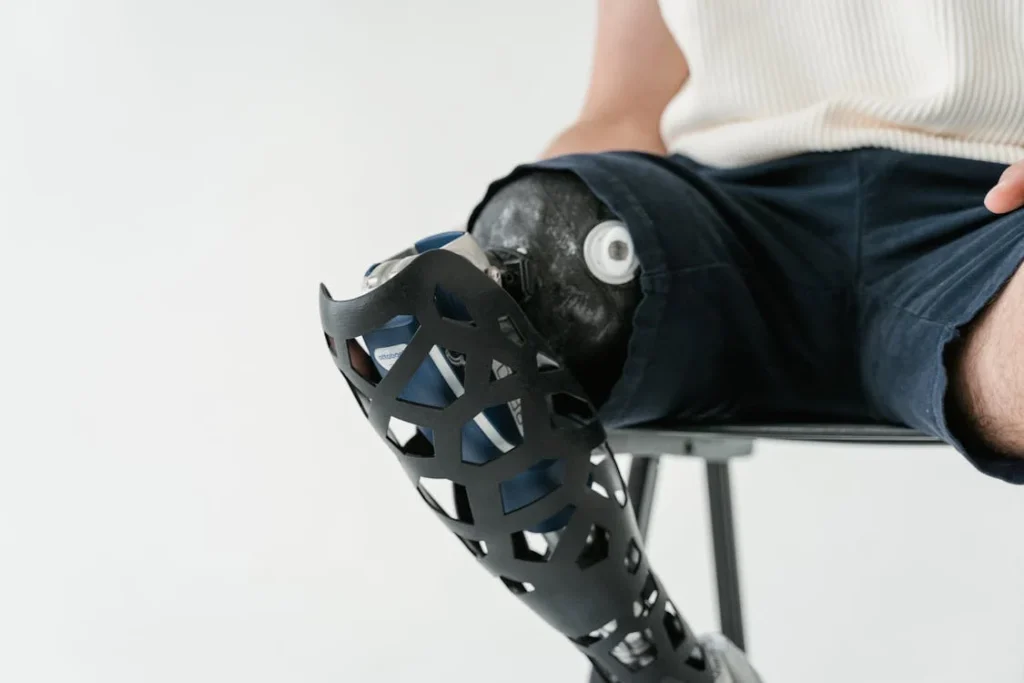
Choosing the Right Prosthetic for Durability and Long-Term Use
When selecting a bionic prosthetic limb, durability is one of the most important factors to consider. While maintenance plays a significant role in extending the lifespan of a prosthetic, the initial choice of model, material, and features can make a big difference in how long it lasts.
Investing in a high-quality prosthetic that meets individual needs and lifestyle requirements can lead to fewer repairs, better comfort, and long-term satisfaction.
Understanding Different Prosthetic Models
Not all bionic prosthetic limbs are built the same. Some are designed for general daily use, while others cater to specific needs like sports, heavy-duty work, or delicate motor functions. The choice depends largely on the user’s lifestyle and activity level.
For example, someone who leads an active lifestyle and enjoys physical activities such as hiking or running will need a prosthetic limb built with reinforced materials and shock-absorbing technology.
On the other hand, someone who primarily uses their prosthetic for office work or household tasks may not need such heavy-duty features. Choosing a model that aligns with daily activities can reduce unnecessary wear and tear, extending its lifespan.
The Importance of Material Quality
Materials play a crucial role in determining the durability of a prosthetic limb. High-quality prosthetics are typically made from carbon fiber, titanium, and medical-grade plastics, which offer strength while keeping the device lightweight.
Carbon fiber is particularly popular due to its exceptional durability and resistance to impact, making it a great choice for prosthetic legs and high-performance bionic hands.
In contrast, lower-cost models may use less durable materials, which can wear out faster and require more frequent repairs.
While budget considerations are important, investing in a well-built prosthetic can save money in the long run by reducing maintenance costs and the need for premature replacements.
Finding the Right Fit for Comfort and Stability
A well-fitted prosthetic limb is less likely to develop issues related to alignment and structural strain. If a prosthetic does not fit properly, it may cause uneven pressure on certain parts of the device, leading to faster wear and tear.
A loose-fitting socket, for instance, can result in unnecessary movement, increasing stress on the mechanical components.
To ensure the best fit, users should work closely with their prosthetist during the fitting process. Regular follow-ups are essential, especially in the first few months of using a new prosthetic.
If any discomfort, instability, or changes in fit occur, adjustments should be made promptly to prevent long-term damage to the device.
Advanced Features That Improve Longevity
Many modern bionic prosthetics come with smart features that not only improve functionality but also contribute to durability.
Some models are equipped with self-adjusting sensors that adapt to different movements, reducing mechanical strain and preventing overuse of certain components. Others include waterproofing and dust resistance, making them more resilient in different environments.
For users who need a prosthetic limb with long-term durability, exploring options with protective coatings, reinforced joints, and adaptive technology can be a worthwhile investment. These features help reduce the risk of damage and ensure consistent performance over time.
Balancing Cost and Longevity
While it’s tempting to opt for the most affordable option, durability should be a key consideration when choosing a prosthetic limb.
A lower upfront cost might seem appealing, but if the prosthetic requires frequent repairs or needs replacement within a short period, it could end up costing more in the long run.
Discussing options with a prosthetist and understanding the long-term benefits of different models can help users make an informed decision. Many high-quality prosthetics come with warranties or service plans, providing additional peace of mind and financial protection.
Making an Informed Decision
Choosing the right prosthetic limb is not just about finding the most advanced technology—it’s about selecting a model that fits well, aligns with lifestyle needs, and offers the best durability for long-term use.
By considering material quality, fit, activity level, and special features, users can ensure that their prosthetic provides reliability and comfort for years to come.
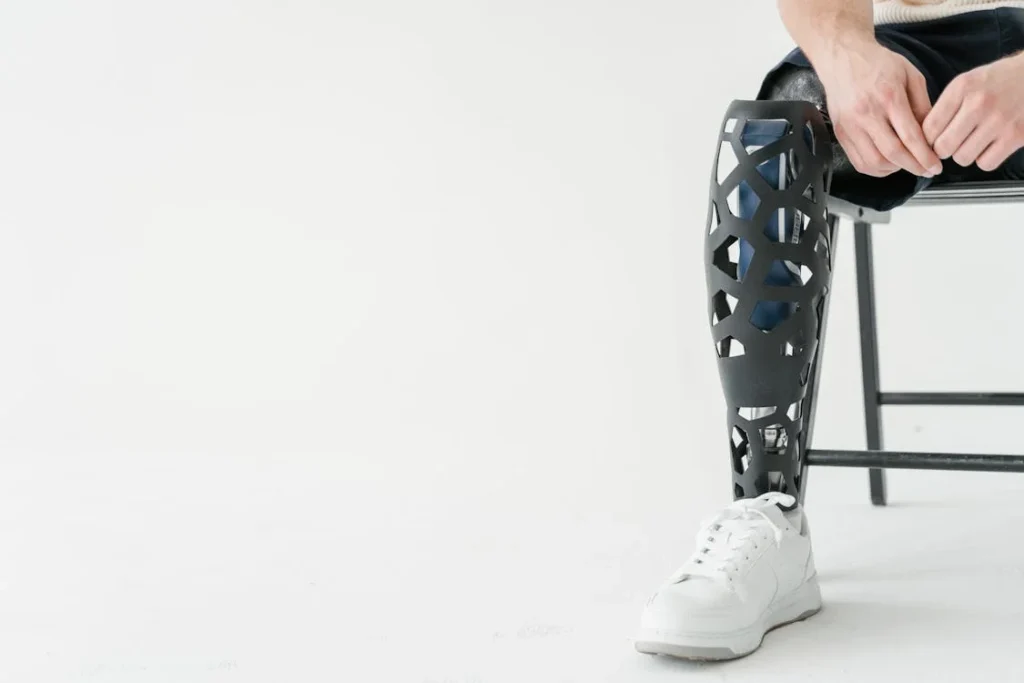
The Future of Bionic Prosthetic Durability and Maintenance
As technology advances, the durability and maintenance of bionic prosthetic limbs are improving significantly. Innovations in materials, smart technology, and manufacturing processes are helping prosthetic users experience longer-lasting and more efficient devices.
Looking ahead, these advancements will continue to shape the industry, making prosthetics more reliable, cost-effective, and easier to maintain.
Stronger and More Resilient Materials
One of the biggest improvements in prosthetic durability comes from the development of stronger and lighter materials. Researchers are constantly working on new composites that offer increased strength without adding extra weight.
Carbon fiber, already a popular choice, is being refined to be even more impact-resistant. Newer alloys, such as titanium-based blends, are also making prosthetics more durable while maintaining flexibility and comfort.
In addition to mechanical durability, researchers are exploring self-healing materials that can repair minor cracks and wear on their own.
While still in the experimental phase, these materials could significantly extend the lifespan of prosthetic limbs, reducing the need for frequent repairs.
Advancements in Battery Technology
Battery performance is one of the most critical factors in the longevity of bionic limbs. Currently, lithium-ion batteries power most bionic prosthetics, but newer energy storage solutions are being developed to last longer and charge faster.
Solid-state batteries, for example, offer higher energy density, meaning they can store more power in a smaller space while lasting longer between charges.
Wireless charging technology is also being explored for prosthetic limbs, which would eliminate the need for users to plug in their devices manually. This could help prevent wear and tear on charging ports and extend the overall lifespan of the electronic components.
AI-Powered Predictive Maintenance
With the rise of artificial intelligence, smart prosthetics are becoming more advanced in diagnosing their own maintenance needs. Future prosthetic limbs may come equipped with self-monitoring sensors that detect wear and tear in real time.
These sensors could alert users when specific parts need servicing or when the device requires a software update.
AI-powered systems could also analyze usage patterns and adjust settings to optimize durability. For example, if a prosthetic hand detects excessive strain on its fingers, it could redistribute pressure to prevent mechanical fatigue, ensuring a longer-lasting device.
3D Printing for Faster and More Affordable Repairs
One of the most promising advancements in prosthetic maintenance is the use of 3D printing technology. With 3D printing, replacement parts can be produced quickly and affordably, reducing downtime for users who need repairs.
Instead of waiting for weeks to receive a new component, users may soon be able to visit a local clinic that can print the necessary parts on demand.
Beyond repairs, 3D printing is also making it easier to create customized prosthetics that fit perfectly and provide maximum comfort. This personalization helps prevent unnecessary strain on the device, further improving its durability.
The Shift Towards More Sustainable Prosthetics
As the demand for prosthetic limbs grows, sustainability is becoming an important focus in the industry. Manufacturers are exploring ways to make prosthetics more eco-friendly without compromising durability.
Recyclable materials, biodegradable components, and energy-efficient designs are all being considered for the next generation of bionic limbs.
Sustainable prosthetics not only benefit the environment but also contribute to lower costs and increased availability. As production methods become more efficient, high-quality prosthetics may become more affordable and accessible to users worldwide.
What This Means for Users
For prosthetic users, these advancements mean a future with fewer breakdowns, longer-lasting devices, and lower maintenance costs.
With stronger materials, smarter monitoring systems, and improved energy efficiency, the next generation of bionic prosthetic limbs will require less frequent servicing while providing better performance.
As technology continues to evolve, users can look forward to prosthetic limbs that seamlessly integrate into their daily lives, offering greater reliability and independence.
The goal is not just to create more advanced prosthetics, but to ensure that they remain functional, durable, and easy to maintain for as long as possible.
Conclusion
Bionic prosthetic limbs have come a long way in terms of durability and reliability, but their lifespan depends on proper care, regular maintenance, and choosing the right model for individual needs. While most high-quality prosthetics last between three to five years, factors like material quality, frequency of use, and environmental conditions can impact their longevity. Simple habits like cleaning the device, handling it with care, and seeking timely professional servicing can significantly extend its life.
As technology advances, prosthetic limbs are becoming more durable, efficient, and easier to maintain. With stronger materials, improved battery life, and AI-powered diagnostics, the future promises even longer-lasting prosthetics with minimal upkeep. Innovations like 3D printing and smart monitoring systems will further enhance maintenance, making repairs faster and more affordable.
For those using or considering a bionic prosthetic limb, investing in proper care and staying updated with technological advancements ensures a smoother experience. At Robobionics, we are committed to providing high-quality, durable prosthetic solutions that restore independence and improve lives. If you’re looking for a reliable bionic prosthetic, book a free demo of Grippy™ today and experience the future of prosthetics firsthand!



